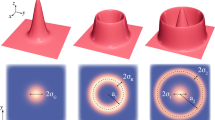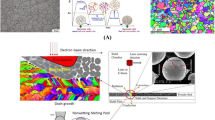Abstract
Improvement of surface finish and material removal has been quite a challenge in a finishing operation such as abrasive flow machining (AFM). Factors that affect the surface finish and material removal are media viscosity, extrusion pressure, piston velocity, and particle size in abrasive flow machining process. Performing experiments for all the parameters and accurately obtaining an optimized parameter in a short time are difficult to accomplish because the operation requires a precise finish. Computational fluid dynamics (CFD) simulation was employed to accurately determine optimum parameters. In the current work, a 2D model was designed, and the flow analysis, force calculation, and material removal prediction were performed and compared with the available experimental data. Another 3D model for a swaging die finishing using AFM was simulated at different viscosities of the media to study the effects on the controlling parameters. A CFD simulation was performed by using commercially available ANSYS FLUENT. Two phases were considered for the flow analysis, and multiphase mixture model was taken into account. The fluid was considered to be a
Similar content being viewed by others
References
Tzeng H Y, Yan B, Hsu T, et al. Self-modulating abrasive medium and its application to abrasive flow machining for finishing micro channel surfaces. International Journal of Advanced Manufacturing Technology, 2007, 32(11–12): 1163–1169
Gorana V K, Jain V K, Lal G K. Prediction of surface roughness during abrasive flow machining. International Journal of Advanced Manufacturing Technology, 2006, 31(3–4): 258–267
Wang A, Liang K, Liu C, et al. High precision polishing method in 3-D surface and elastic abrasive gel development. In: Proceedings of 4th Asia Pacific Forum on Precision Surface Finishing and Deburring Technology. Taichung: Metal Industries Research & Development Centre, 2005, 123–128
Tom K. Advanced abrasive flow technologies. In: Proceedings of 4th Asia Pacific Forum on Precision Surface Finishing and Deburring Technology. Taichung: Metal Industries Research & Development Centre, 2005, 129–138
Jain V K, Adsul S G. Experimental investigations into abrasive flow machining (AFM). International Journal of Machine Tools & Manufacture, 2000, 40(7): 1003–1021
Gorana V K, Jain V K, Lal G K. Experimental investigation into cutting force and active grain density during abrasive flow machining. International Journal of Machine Tools & Manufacture, 2004, 44(2–3): 201–211
Jain R K, Jain V K, Kalra P K. Modeling of abrasive flow machining process: A neural network approach. Wear, 1999, 231(2): 242–248
Jain R K, Jain V K, Dixit P M. Modeling of material removal and surface roughness in abrasive flow machining process. International Journal of Machine Tools & Manufacture, 1999, 39(12): 1903–1923
Kumar Jain R, Jain V K. Simulation of surface generated in abrasive flow machining process. Robotics and Computer-integrated Manufacturing, 1999, 15(5): 403–412
Kenda J, Pusavec F, Kermouche G, et al. Surface Integrity in abrasive flow machining of hardened tool steel AISI D2. In: Proceedings of 1st CIRP Conference on Surface Integrity (CSI). Procedia Engineering, 2011, 19: 172–177
Gorana V K, Jain V K, Lal G K. Forces prediction during material deformation in abrasive flow machining. Wear, 2006, 260(1–2): 128–139
Rabinowicz E, Dunn L A, Russell P G. A study of abrasive wear under three body conditions. Wear, 1961, 4(5): 345–355
Fang L, Zhao J, Sun K, et al. Temperature as sensitive monitor for efficiency of work in abrasive flow machining. Wear, 2009, 266(7–8): 678–687
Author information
Authors and Affiliations
Corresponding author
Rights and permissions
About this article
Cite this article
Dash, R., Maity, K. Simulation of abrasive flow machining process for 2D and 3D mixture models. Front. Mech. Eng. 10, 424–432 (2015). https://doi.org/10.1007/s11465-015-0366-6
Received:
Accepted:
Published:
Issue Date:
DOI: https://doi.org/10.1007/s11465-015-0366-6




